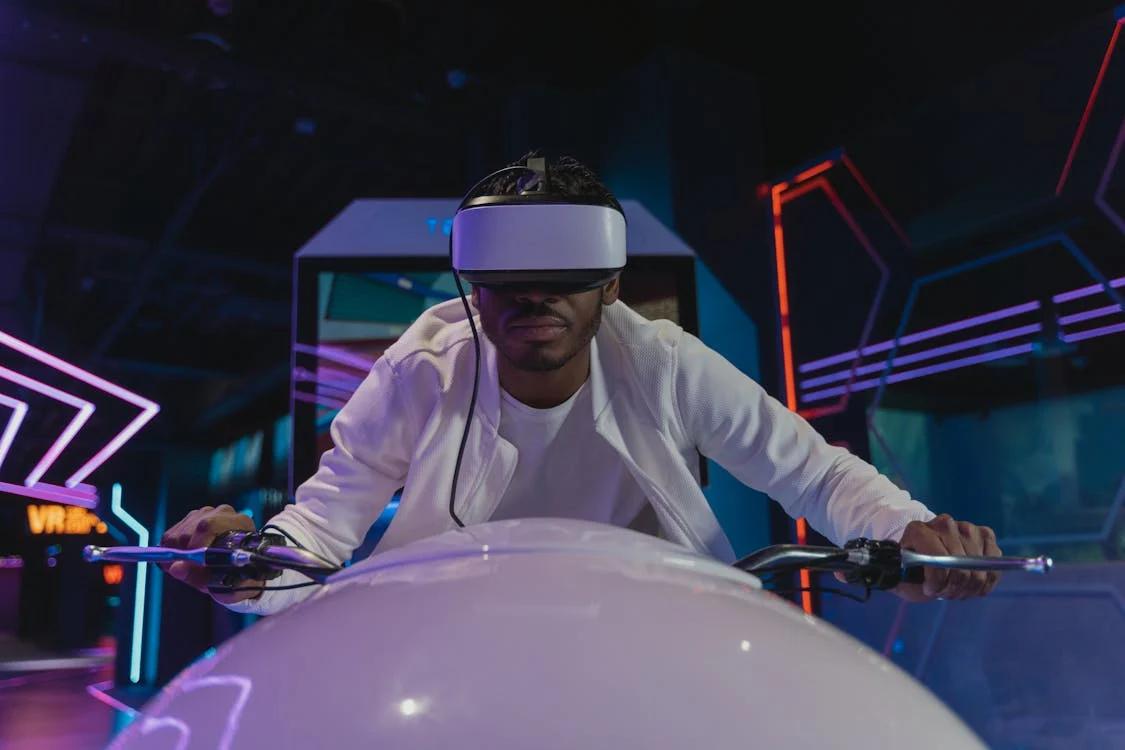From Track to Screen: How Motorcycle Simulators Are Reshaping Pro Racing

Racing is loud, messy, and a little bit dangerous — that’s why we love it. The smell of hot tires and gasoline, the chatter of a bike on the limit, the way a rider’s knee almost kisses the ground before snapping the bike upright again. But these days, the story of pro racing doesn’t start on the tarmac. It starts in a quiet room with a rig, a headset, and a screen.
Trading Track Days for Digital Hours
A few years ago, simulator training was something you might see in Formula 1, not on two wheels. Now it’s everywhere. The Book of Ra was released by Greentube in 2005 and proves just how far digital worlds can go in pulling you in, making you forget everything outside the screen. That’s what motorcycle simulators are doing for riders. They let them ride hundreds of laps without burning fuel, without crashing, without waiting for the rain to stop. Teams love it because it saves a fortune on logistics, and rookies love it because it gives them seat time they could never afford on a real circuit.
Why Riders Can’t Get Enough
-
Unlimited laps: No curfews, no weather issues, no rental fees.
-
Safe mistakes: Drop the virtual bike, pick it up, try again.
-
Real feedback: Telemetry shows exactly where they braked, shifted, or messed up.
-
Physical training: The rigs are tough — you’ll sweat just like on track.
When they finally roll out for real practice, they’re already sharp. Those first laps don’t feel like warm-ups anymore.
Under the Hood of a Simulator
These setups are serious pieces of tech. Forget a cheap controller — riders sit on full frames that lean and roll like the real thing. The handlebars push back when you brake too hard, the seat shakes when the virtual rear tire loses grip, and the screens or VR wrap around you so all you see is the track ahead.
|
Component |
Role in Training |
|
Motion Platform |
Tilts and rolls to copy real cornering |
|
Handlebar Force |
Gives pressure feedback under braking |
|
Surround View |
Immerses riders in every turn and straight |
|
Lap Telemetry |
Breaks down every move for analysis |
Spend half an hour on one and you’ll feel it in your arms and core. It’s not a toy. It’s a workout.
Sharpening the Mind
Racing is just as much mental as it is physical. A single lapse of focus can wreck a perfect lap or cost a podium. Simulators give riders a space to drill corners over and over until their lines are automatic. They can load wet track scenarios, ride night sessions, or even recreate dangerous moments like sudden slides or mechanical issues. Each session builds muscle memory and calm under pressure. By the time race day comes, nothing feels like a surprise — they’ve already faced it all in a controlled environment, which keeps their heads clear when the lights go out.
The Business Side
For teams, simulators are a dream. No transport trucks, no destroyed bikes, no overnight repairs. They can train a rider, gather data, and test setups without leaving the shop. Entire days of track time can now be condensed into focused indoor sessions with full telemetry and video review. Engineers can tweak settings instantly, replay laps from different angles, and compare riders head to head without moving a single bike. Sponsors are catching on too — their branding can live in these virtual environments, streamed to fans online, creating an interactive experience that builds hype even before race weekend.
The Future Is Getting Wilder
Tech keeps getting better. Expect smarter software that adapts to a rider’s style, physics so real it’s hard to tell it’s a sim, and connected training that lets two riders race each other from opposite sides of the world. Fans might even get to ride along virtually, feeling what 250 km/h through a chicane really does to your stomach.
Final Lap
Motorcycle simulators aren’t a passing trend — they’ve become part of the sport’s DNA. They give riders room to crash, learn, and repeat until every move feels natural. Riders can grind through tricky sections, practice under every imaginable condition, and fine tune their lines before touching real tarmac. This means fewer wasted laps, sharper reactions, and a confidence boost that shows on race day. The track will always be the ultimate test, but the screen is where riders build the muscle memory and mental toughness that turn them into champions.
Riders aren’t just using simulators for fun. They use them because they work. Some key benefits:




